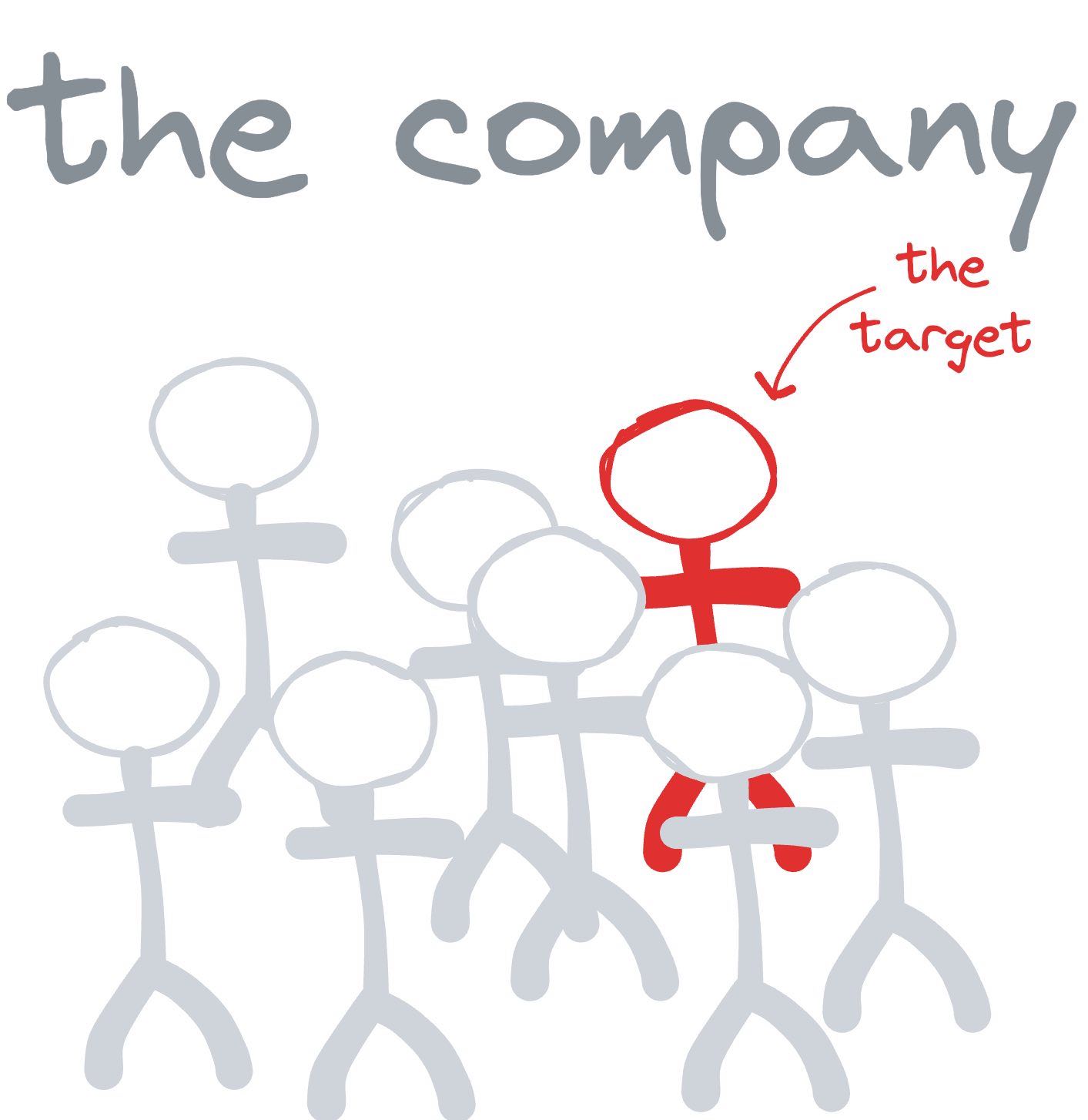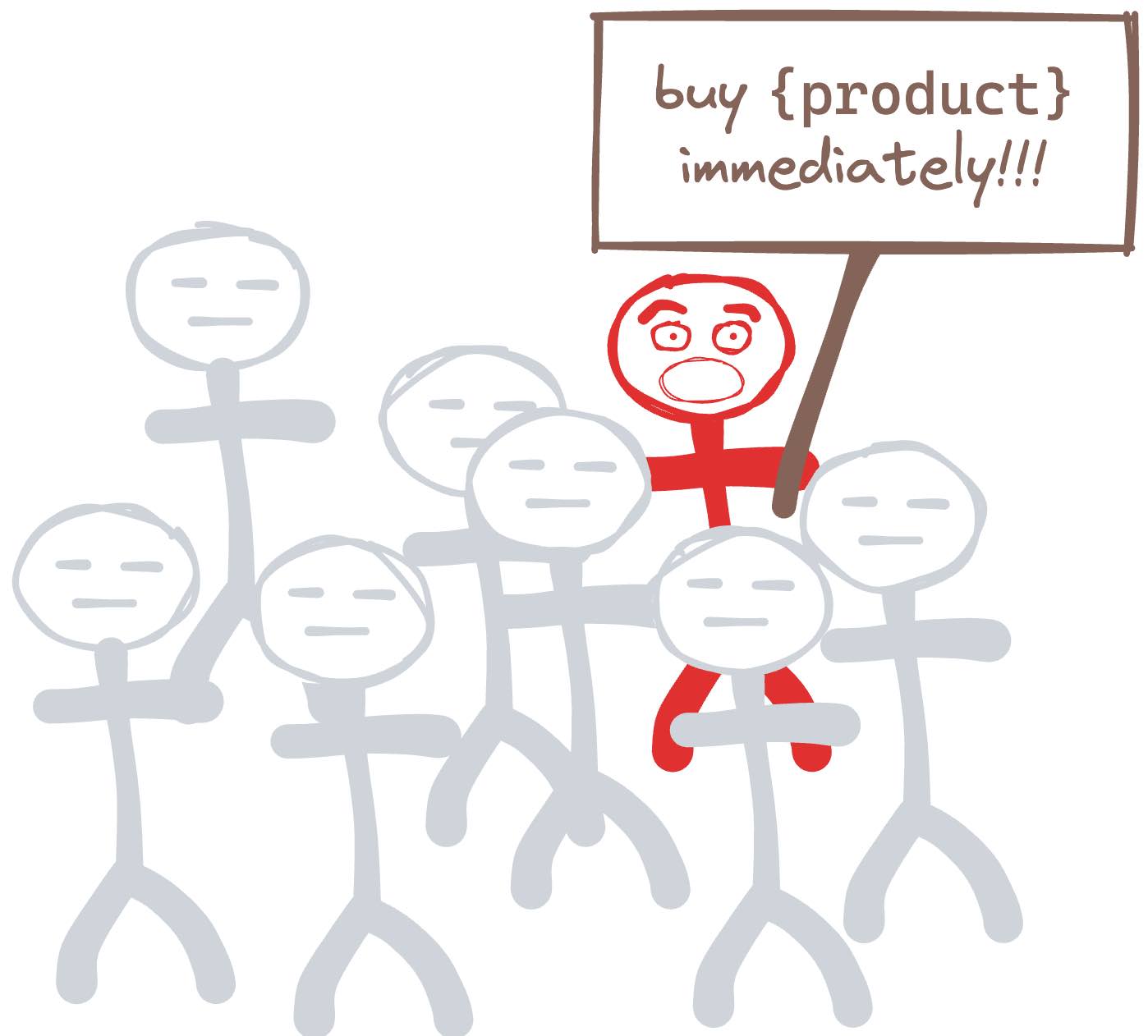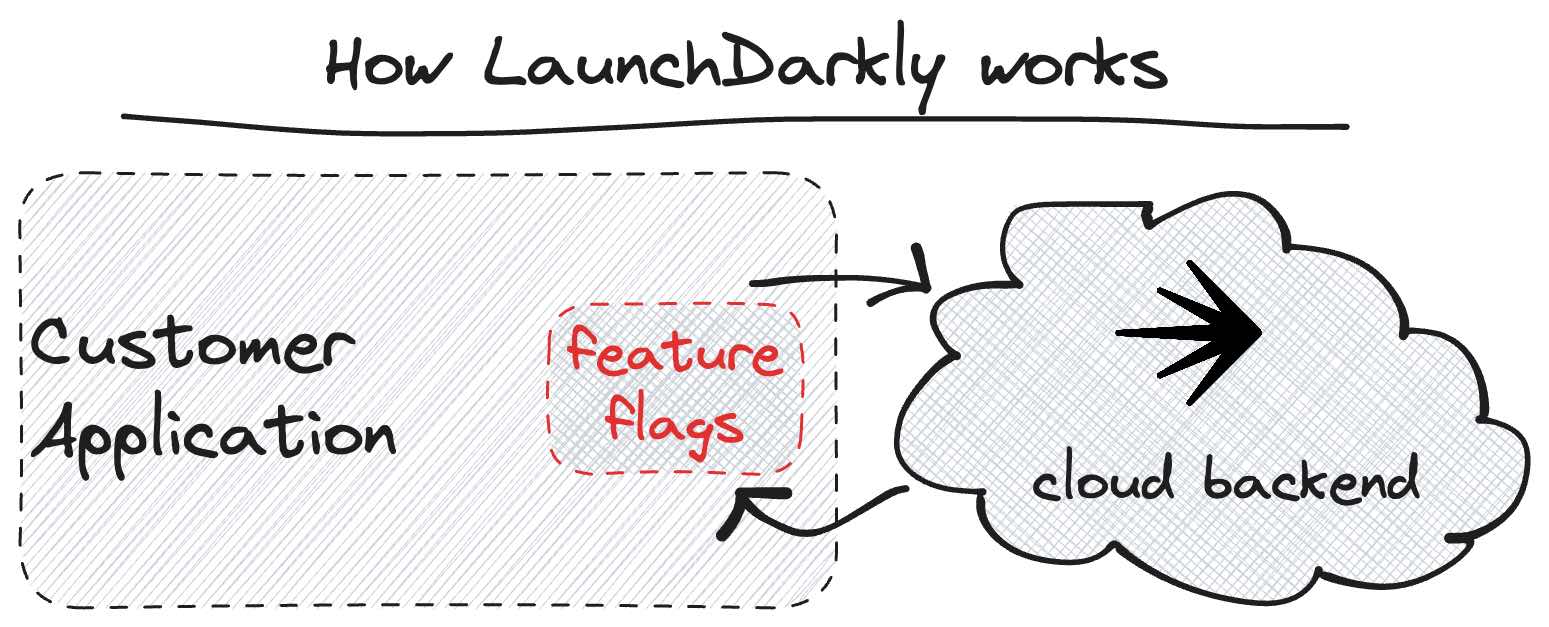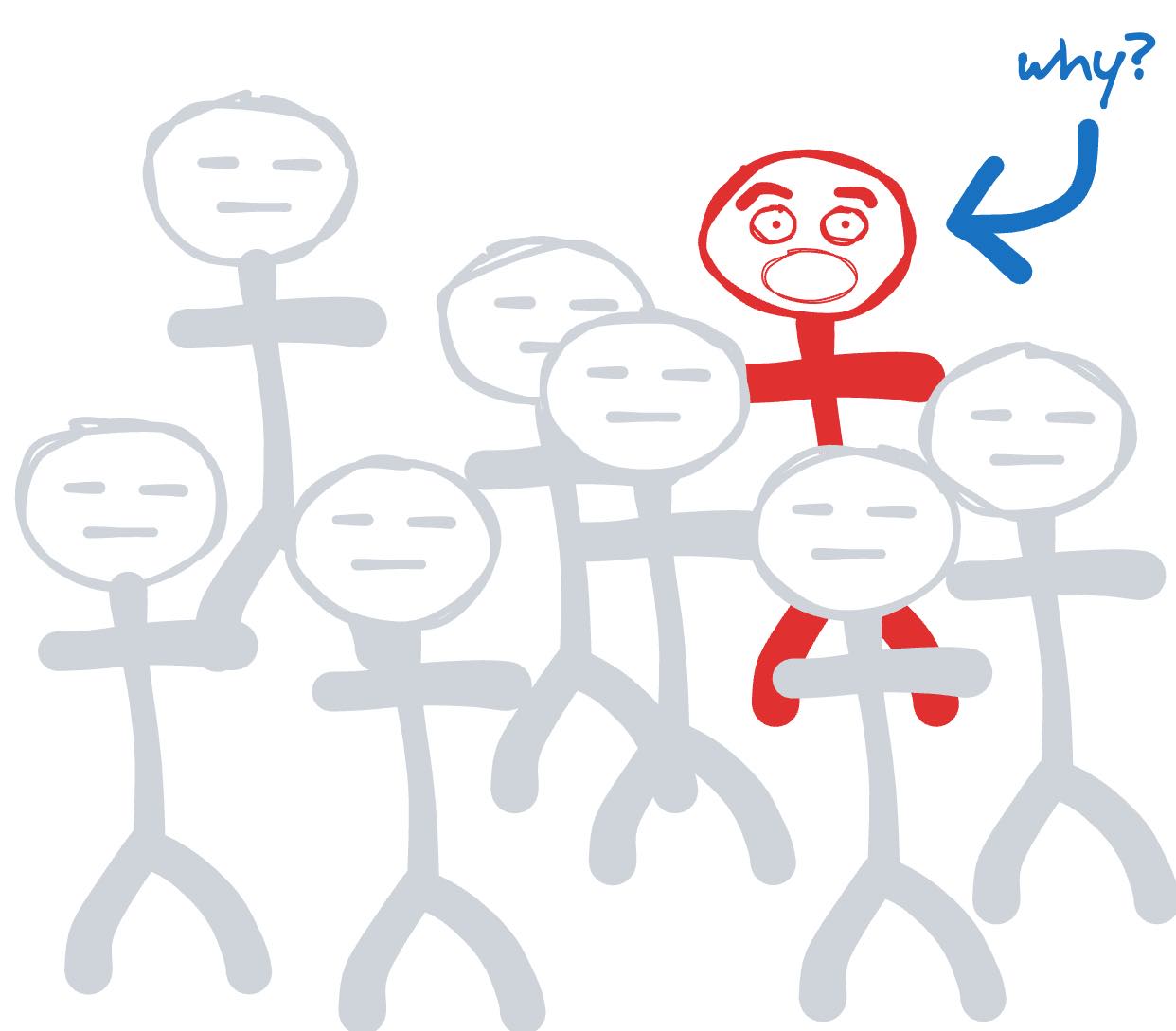Learning about your org from the marketing it falls for
Marketing is personal. We all spend money to solve problems that we encounter in our lives.
This is just as true for people buying software within large corporations as it is for individuals buying Nike sneakers.
Careful consideration of the marketing that affects individuals within a large organization can reveal a lot about how that organization works, and the emotional experiences of its employees at work.
How enterprise SaaS marketing works
Software companies can't market their wares to large enterprises like DuPont, ADP, or Nvidia in the general sense. They can't target digital ads or send cold outreach emails to a corporate entity.

Instead, businesses have to sell to specific individuals inside their targeted companies. In order for large-scale enterprise SaaS sales to actually go through, these individuals have to loudly advocate in meetings, emails, and Slack conversations to convince their company to purchase the software.
Doing this internal advocacy usually sucks for the advocates. It would often be more comfortable for them to just "make do" with whatever internal solutions their company already has.
This means that the advocates that enterprise SaaS marketers are targeting can't just be casually interested in buying the software—they have to be extremely interested in buying it.

To help inspire this extreme level of interest, marketing departments craft carefully-tailored campaigns for specific profiles of advocates within their prospective customer companies. These advocate profiles are sometimes referred to as buyer personas.
You can often see what buyer personas an enterprise SaaS company is targeting with their marketing by glancing over their marketing site. If they're approaching marketing through buyer personas, they won't just have one top-level marketing page, they'll have several.

In the navigation bar at the top of their main marketing site, next to other menu items like "Pricing", "Resources", and "About Us", there will be a drop-down named something like "Use Cases", or "Solutions". In that category, you'll see the names of their targeted buyer personas listed neatly—perhaps "Marketing, IT, Finance", or "Developers, SRE, Product Managers".
Whatever the buyer personas are, each will have a specialized landing page with its own customized sales pitch, describing how their enterprise SaaS product solves that type of internal advocate's specific pain points.
Let's look at LaunchDarkly as an example.
Case Study: LaunchDarkly

LaunchDarkly provides feature flags as a service for the enterprise. To use their product, development teams embed LaunchDarkly's SDKs into their applications. Those SDKs phone home to LaunchDarkly's cloud backend, loading boolean values over the network.
This functionality lets LaunchDarkly's customers remotely activate and deactivate specific code paths within the software without having to ship new versions of their software into their production environments.
On top of their feature flag backend functionality, LaunchDarkly offers a feature-rich dashboard that lets its customers control flag values across their user base with very low latency, conduct A/B tests across customer groups, and inspect experiment results in their analytics backend.

Through this product offering, LaunchDarkly gives its customers much more granular and powerful access to change product behavior in their deployed software environments than would be possible for them on their own.
In other words, LaunchDarkly's customers have a problem—they lack control. LaunchDarkly's product offering solves that problem for its customers, empowering them.
LaunchDarkly reinforces this empowerment theme repeatedly in its marketing content. On the LaunchDarkly homepage, when you open the Product dropdown, the subheading under the "Feature Flags" section invokes this concept of empowerment directly:
Control every software release.
Further down the main page there is a banner heralding the "Developer-powered workflows" their platform makes possible.
The stark black color that dominates LaunchDarkly's logo and marketing site reinforces the sense of power, status and control for their customers. Many luxury brands like Chanel and Gucci do the same, to key into their target customers' fantasies of status and authority. Sports brands like Nike and Adidas also have black logos, to highlight the sense of personal empowerment that can come from athletic prowess.

If this brand analysis sounds a little far-fetched to you, don't take it from me, take it from FocusLab, the marketing agency that designed LaunchDarkly's marketing strategy:
"From its position of authority, the brand communicates strength in unity, authenticity, and transformative action."
... and:
"LaunchDarkly is Boast-worthy: a person who's probably cooler than you, but their presence makes you feel empowered, confident, and understood"
Across their marketing landing pages, LaunchDarkly sharpens this empowerment-driven sales pitch in specific ways for each buyer persona. On their landing page specifically tailored for development teams:
"Turn off any feature or code path with the click of a mouse (or API call) within 200 milliseconds."
The sales pitch is tailored a bit differently for mobile developers:
"Ship changes instantly, while taking control over your mobile releases."
It changes and sharpens again, for product managers:
"Control releases from end to end... own more of the software delivery process."
Stepping back, LaunchDarkly's marketing strategy comes into focus. They market their product to enterprise customers through internal advocates who already work for their target companies. These advocates fall into one of a few specific buyer personas, defined by their role and the specific problems they're hoping to solve for themselves with LaunchDarkly's product.

And regardless of which buyer persona they fall into, each individual that advocates internally for purchasing LaunchDarkly does it because they feel disempowered within their organization.
What this can tell you about your organization
Even if you're not a digital marketer, understanding LaunchDarkly's marketing approach matters. If some members of your organization are clamoring for LaunchDarkly, ask yourself—why? Why is this targeted marketing campaign working on them?
What is it about your organization that makes them feel disempowered?

Maybe your mobile development team's release cadence is beholden to the whims of Apple's App Store review board. In a situation like this, LaunchDarkly might be the ticket to empowerment your organization needs. They might be encountering some external force that's insurmountable without assistance.
But in other cases, your organization might be disempowering itself.
Maybe your backend developers want LaunchDarkly because they feel powerless to control the release cadence of software onto your own cloud servers. Is that a necessary consequence of your business model, or an unintentional side effect of your organization's internal divisions?
Maybe your product management team wants LaunchDarkly because they feel like engineering has cut off their access to product experimentation, disempowering them from doing their jobs. But, if your organization hired these product managers to do that job, why isn't it setting them up for success?
In situations where individual disempowerment is a consequence of your company's own operational structure, LaunchDarkly might be a convenient but expensive band-aid on a larger organizational wound.

If a group within your org wants something like LaunchDarkly, ask yourself how they ended up in a position where they felt the pain that LaunchDarkly promises to relieve in the first place.
Are there changes you could make to your team's operating structure that might empower your coworkers more directly?
LaunchDarkly is a great product, and it might be a perfect fit for your organization. But not every problem in your company would best be solved by purchasing an enterprise SaaS—even if there's a digital marketing team out there that's trying to convince you otherwise.